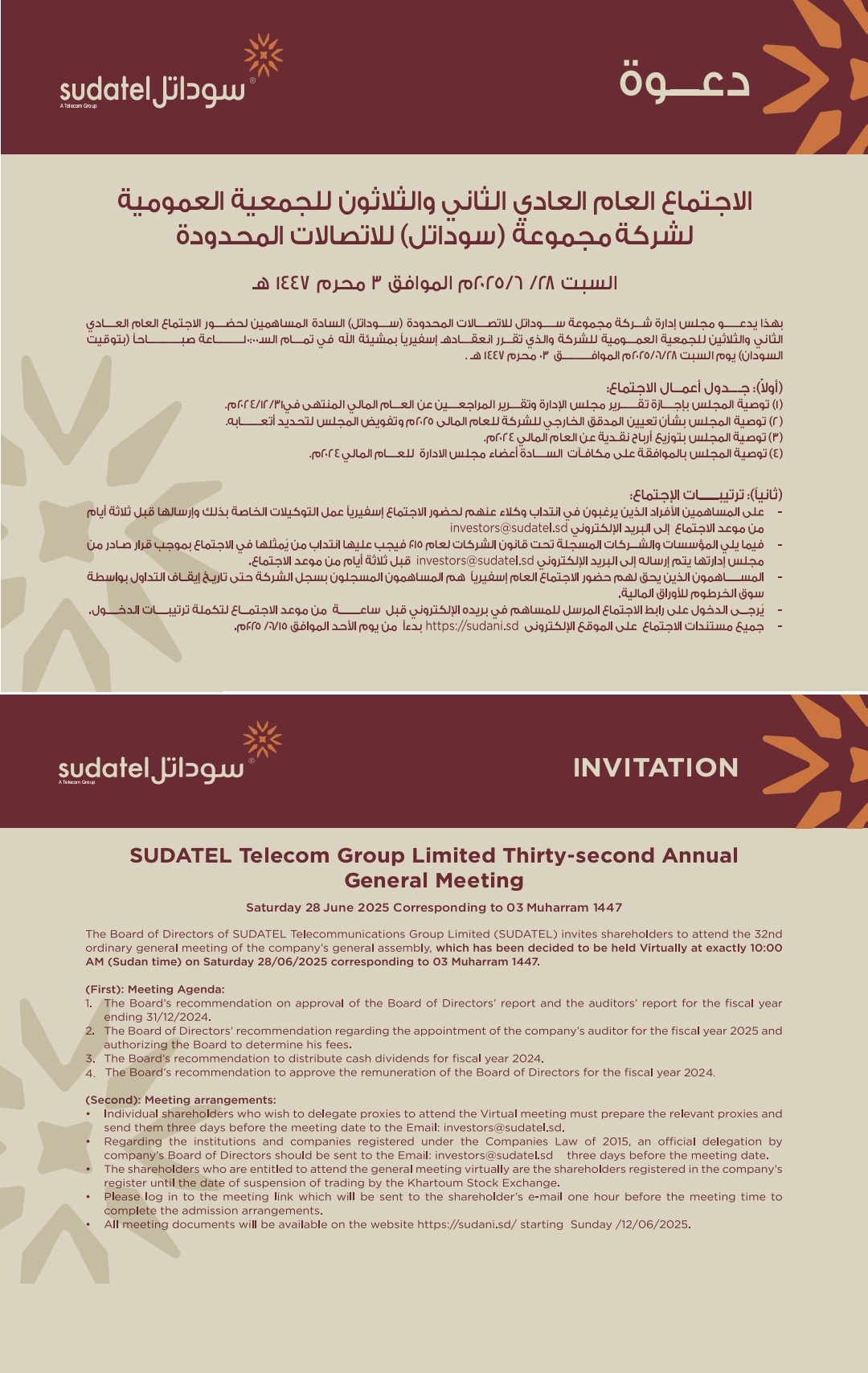د. محمد يوسف قباني يكتب: الإنسان السوداني.. بين العيش تحت ثقل المأساة وبناء إرادة الحياة.. The Sudanese people…between living under the burden of tragedy and building the will to live.. Dr. Mohamed Elgabbani..

د. محمد يوسف قباني يكتب: الإنسان السوداني.. بين العيش تحت ثقل المأساة وبناء إرادة الحياة..
The Sudanese people…between living under the burden of tragedy and building the will to live..
Dr. Mohamed Elgabbani..
على هذه الأرض الممتدة بين النيل والصحراء، حيث تتقاطع حكايات الفرح المبتور مع أنين الخراب، يولد الإنسان السوداني محاطاً بظلّ المأساة. مأساة تتوارثها الأجيال كما تتوارث الملامح والذكريات، ثقيلة على الروح كما هي على البدن، تلاحق الخطوات وتجلس في الزوايا الصامتة من البيوت. ومع ذلك، فإن هذه الأرض نفسها تشهد ولادة إرادة للحياة لا يمكن كسرها، إرادة تنمو في شقوق الجراح كما تنمو الزهور بين الصخور، لتثبت أن ما يملكه هذا الشعب من صبر وصلابة قد يفوق قسوة الواقع الذي يعيشه.
المأساة في السودان ليست خبراً عابراً على شاشة التلفاز، بل هي يوميات مكتوبة بالدمع والعرق، متجسدة في وجوه الأمهات اللواتي ودعن أبناءهن إلى المجهول، وفي أقدام النازحين وهي تبتعد عن قراها المحروقة. إنها حربٌ تتجدد، وأزمات تتكاثر، وخرابٌ يتسلل إلى تفاصيل الحياة حتى صار جزءاً من ملامحها. يعيش السوداني تحت هذا الثقل كما يعيش من يحمل صخرة فوق كتفيه، ينهكه الحمل لكنه لا يتوقف عن المسير.
غير أن المشهد، رغم سوداويته، يخفي بين ثناياه ومضات من النور والأمل. فهنا، على أطراف معسكر للنزوح، تغرس امرأة بضع شجيرات أمام خيمتها لتخبر أطفالها أن الجمال لا يموت. وهناك، وسط ركام البيوت، يقيم شاب ورشة صغيرة لإصلاح الدراجات، وكأنه يقول إن الحياة يمكن أن تبدأ من أي نقطة، حتى من بين الأنقاض. وفي مدرسة تفتقد للكهرباء والمقاعد، يواصل معلمون تدريس أبنائهم بحماس لا يقل عن حرارة الشمس التي تضرب السقف المعدني فوق رؤوسهم.
المأساة، في وجهها الخفي، تتحول إلى معلم صامت يربي في النفوس الصبر ويعيد ترتيب الأولويات. السوداني الذي ذاق مرارة النزوح يعرف أن الخيمة لا تُرفع إلا بتكاتف الأيدي، والذي عاش الجوع يدرك أن اللقمة، مهما كانت صغيرة، يجب أن تُقسم على الجميع. في الليالي الطويلة، حين يثقل الصمت على القلوب، تتوهج الحكايات القديمة وتعود الأغاني الشعبية لتمنح المستمعين إحساساً بأن ما ضاع يمكن أن يعود، وأن الغد ربما يحمل لهم ما افتقدوه اليوم.
هذه الإرادة ليست وليدة لحظة، بل هي تراكم ثقافة شعبية مشبعة بالصبر، وإيمان عميق بقدرة الله على تغيير الأحوال، وروابط عائلية لا تنكسر. هي في القول الحكيم الذي نسمعه، والذي يقول: “الصبر مفتاح الفرج”، وفي صوت المغني الشعبي وهو يردد كلمات عن العودة والسلام، وفي عيون الأطفال التي تلمع بالأمل رغم أن ميلادهم كان على وقع الرصاص. حتى الفنون، من الرسم إلى الشعر، تتحول إلى مساحة يتنفس فيها الناس خارج حدود المأساة، وكأنهم يقيمون معسكراً صغيراً للحرية داخل أسوار القهر.
هكذا، تتشكل مقاومة صامتة لا تُرى في نشرات الأخبار. مقاومة تتمثل في إصرار الأمهات على تعليم أبنائهن، وفي احتفال بسيط بعيد ميلاد طفل في مخيم نزوح، وفي صلاة جماعية تُرفع فيها الأكف طلباً للسلام. هي مقاومة لا تحمل السلاح، لكنها تحمل ما هو أعمق: إرادة الحياة.
الإنسان السوداني، وهو يعيش تحت ثقل المأساة، يشبه من يمشي على خيط مشدود فوق هاوية؛ يتأرجح أحياناً لكنه لا يسقط. لا يختار الحروب التي تحاصره، ولا الأزمات التي تنهش يومه، لكنه يختار دائماً كيف يرد عليها. يفتح نوافذ صغيرة يدخل منها نور الأمل، ويزرع بذوراً في تربة مشبعة بالدموع لعلها تثمر يوماً. في صمته حكمة، وفي صبره بطولة، وفي ابتسامته المرهقة رسالة للعالم: قد تُثقل المأساة أكتافنا، لكنها لن تنتزع منّا قرارنا بأن نحيا، ونبني، ونحلم.
On this land stretching between the Nile and the desert, where tales of truncated joy intersect with the groans of devastation, the Sudanese person is born surrounded by the shadow of tragedy. A tragedy passed down through generations, just as features and memories are passed down, weighing heavily on the soul as it does on the body, haunting steps and sitting in the silent
corners of homes. Yet, this same land witnesses the birth of an unbreakable will to live, a will that grows in the cracks of wounds like flowers growing among rocks, proving that the patience and resilience of this people can outshine the harsh reality they experience.
Tragedy in Sudan is not a passing news item on television; it is a daily life written in tears and sweat, embodied in the faces of mothers bidding farewell to their children into the unknown, and in the feet of the displaced as they walk away from their burned-out villages. It is a war that is renewed, crises that multiply, and
devastation that infiltrates the details of life until it becomes an integral part of its features. The Sudanese person lives under this burden like someone carrying a boulder on their shoulders, exhausted by the burden but steadfast in their quest. However, despite its bleakness, the scene conceals
within it glimmers of light and hope. Here, on the outskirts of a displacement camp, a woman plants a few trees in front of her tent to tell her children that beauty never dies. There, amid the rubble of homes, a young man sets up a small bicycle repair shop, as if to say that life can begin at any point, even from the rubble. In a school lacking electricity and desks, teachers continue to teach their children with an
enthusiasm no less intense than the sun’s heat beating down on the metal roof above their heads. Tragedy, in its hidden face, transforms into a silent teacher, nurturing patience and reordering priorities. A Sudanese who has experienced the bitterness of displacement knows that a tent can only be erected by joining hands, and one who has experienced hunger
understands that a morsel, no matter how small, must be shared among everyone. On long nights, when silence weighs heavily on hearts, old stories glow and folk songs return, giving listeners a sense that what was lost can return, and that tomorrow may bring them what they missed today. This will is not born of a moment, but rather the accumulation of a popular culture steeped
in patience, a deep faith in God’s ability to change circumstances, and unbreakable family ties. It is found in the wise saying we hear, “Patience is the key to relief,” in the voice of the popular singer as he chants words of return and peace, and in the eyes of children that shine with hope despite their birth amidst the sound of gunfire. Even the arts, from painting to poetry, are
transformed into a space where people breathe outside the confines of tragedy, as if establishing a small camp of freedom within the walls of oppression.
Thus, a silent resistance is formed, invisible in the news. It is a resistance that takes shape in mothers’ insistence on educating their children, in a simple celebration of a child’s birthday in a displacement camp, in a
collective prayer where hands are raised in prayer for peace. It is a resistance that does not carry weapons, but carries something deeper: the will to live. The Sudanese person, living under the weight of tragedy, is like someone walking on a tightrope over an abyss; sometimes he sways but never falls. He does not choose the wars that besiege him, nor the crises that devour his day, but he always chooses how to respond to them.
He opens small windows through which the light of hope enters, and he plants seeds in soil saturated with tears, hoping that one day they will bear fruit. In his silence there is wisdom, in his patience there is heroism, and in his weary smile there is a message to the world: Tragedy may weigh heavily on our shoulders, but it will never strip us of our resolve to live, build, and dream.









